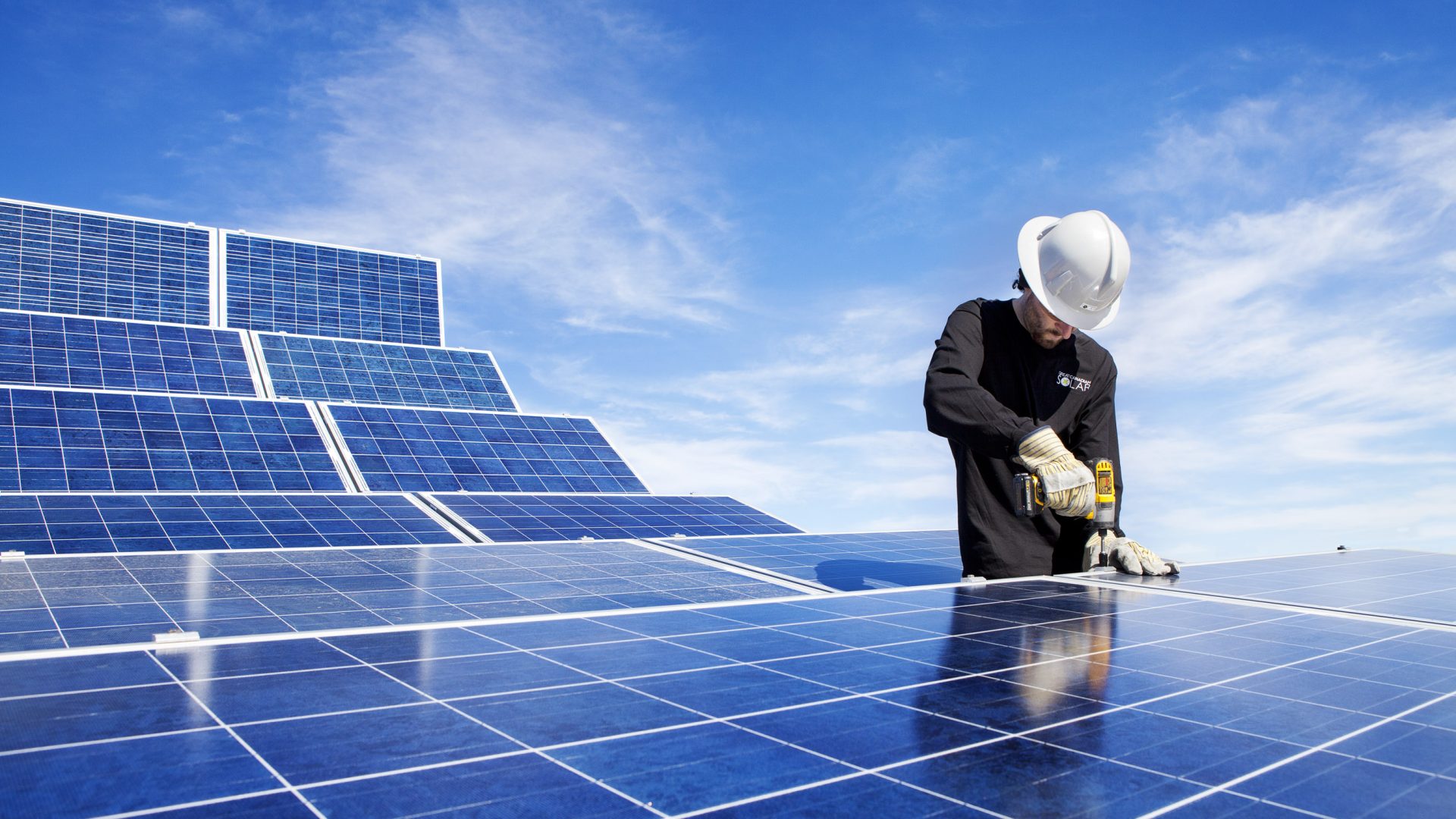
Solar power prices “dropping faster than people expected”
Last week, the newly imposed Trump tariffs on foreign-manufactured solar panels came into effect.
Last week, the newly imposed Trump tariffs on foreign-manufactured solar panels came into effect.
Whilst the solar industry has warned that the increase could result in the loss of 23,000 jobs in the short-term, bullish predictions are that it is unlikely to stop the surge in solar in the US or indeed elsewhere.
In the short-term the reduction in solar jobs “is likely to be jobs that would have been created in the near future but now will not be, not layoffs of current installers,” argues Joshua Rhodes, a Research Fellow at the Energy Institute and Webber Energy Group at the University of Texas.
And the tariffs are unlikely to dent the dramatic increase predicted for solar jobs, either. According to the US Bureau for Labor Statistics: “Employment of solar photovoltaic (PV) installers is projected to grow 105 percent from 2016 to 2026, much faster than the average for all occupations”.
Indeed, as Joshua Rhodes points out the price of solar PV has been “declining for years, a trend that isn’t expected to change anytime soon.”
He is not the only analyst noticing the plummeting cost of solar. Zachary Shahan, an expert on renewables notes that: “solar power prices have been dropping faster than people expected, even faster than experts expected, and even faster than bullish experts expected.”
Indeed, analysts from Bloomberg New Energy Finance (BNEF), keep having to lower their predictions for the cost of solar. Just three years ago, BNEF was forecasting solar dropping from 62 cents/watt in 2015 to 21 cents/watt by 2040. Today it already stands at between 33-37 cents/watt. The cost is plummeting.
Indeed, as Ken Bossong, Executive Director of the SUN DAY Campaign, told Clean Technica last week. “Notwithstanding a year-long effort by the Trump Administration and its congressional allies to prop up coal, nuclear, and natural gas at the expense of renewable energy sources, clean energy technologies have proven themselves to be amazingly resilient.”
In other countries too, analysts are surprised by solar growth and uptake. The Guardian reports from Australia, where industry analysts are talkingabout how “a record-breaking month of rooftop installations and a flood of large-scale solar farms could almost double Australia’s solar power capacity in a single year.”
There has recently been an “unprecedented number” of industrial solar farms approved in New South Wales and Queensland. And there were record solar rooftop installations last month, with 111MW of new panels installed in the country. John Grimes, the chief executive of the Smart Energy Council, tells the paper: “Rooftop installations and utilities are both booming and could turbo-boost the solar numbers overall.”
So despite Trump’s best intentions, as Zachary Shahan notes: “Solar power is going to dominate the energy sector this century. The question is just how quickly it will bring down costs and take over the world. Yet again, the answer seems to be: quicker than people thought.”

